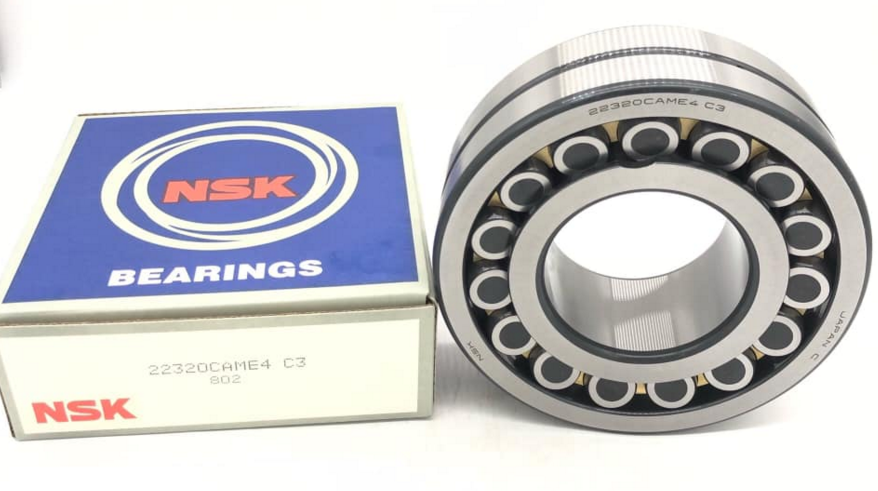
 News
NewsNSK bearings are the most representative rolling bearings with a wide range of uses. It is suitable for high-speed or even extremely high-speed operation, and is very durable without frequent maintenance. In addition, this type of NSK bearing has low friction coefficient, high limit speed, simple structure, low manufacturing cost, and easy to achieve high manufacturing accuracy.
Variety in size range and form, used in precision instruments, low-noise motors, automobiles, motorcycles and general machinery industries. It is the most widely used type of NSK bearing in the machinery industry. Mainly bear radial load, but also can bear a certain amount of axial load.
NSK bearings are commonly used in gearboxes, instruments, motors, household appliances, internal combustion engines, transportation vehicles, agricultural machinery, construction machinery, engineering machinery, etc.
For NSK bearings, the application is very wide. Each industry has different characteristics of damage. Today we will look at the damage characteristics of the engine sliding NSK bearing.Eric Bearing Limited provides high quality NSK Bearing 6309, click here for more information.

(1) Mechanical damage
The mechanical damage of sliding NSK bearings refers to the presence of groove marks on the alloy surface of the bearing bush to varying degrees. In severe cases, metal peeling occurs on the contact surface and a large area of messy scratches occur; under normal circumstances, contact surface damage and ablation simultaneously exist. The main cause of mechanical damage to NSK bearings is that it is difficult to form an oil film on the surface of the NSK bearing or the oil film is severely damaged.
(2) NSK bearing cavitation
Under the repeated action of the cylinder pressure impact load), the surface layer of the sliding NSK bearing undergoes plastic deformation and cold work hardening, and locally loses the deformability, gradually forms grains and expands, and then forms on the loaded surface layer as the wear debris falls off hole. Generally, when cavitation occurs in the bearing bush, pits appear first, and then the pits gradually expand and cause cracks at the interface of the alloy layer. The cracks expand in the parallel direction of the interface until they peel off. The main reason for the cavitation of sliding NSK bearings is that the sudden change of the cross section of the structural elements such as the oil groove and the oil hole causes the oil flow to be strongly turbulent, and bubbles are formed in the turbulent vacuum zone of the oil flow, and then the bubbles collapse due to the increase in pressure. Cavitation. Cavitation generally occurs in the high-load area of the NSK bearing, such as the lower bearing bush of the main NSK bearing of the crankshaft.
(3) Fatigue pitting
NSK bearing fatigue pitting refers to the overheating of the NSK bearing and the excessive clearance of the NSK bearing due to the overloading of the engine, which causes fatigue damage, fatigue pitting or fatigue loss in the middle of the NSK bearing. This kind of damage is mostly caused by overload, NSK bearing clearance is too large, or the lubricating oil is not clean, and foreign matter is mixed in it. Therefore, during use, care should be taken to avoid overloading of NSK bearings and do not run at too low or too high speed; adjust the engine to a stable state when idling; ensure the normal NSK bearing clearance to prevent the engine speed from being too high or too low; check, Adjust the working conditions of the cooling system to ensure that the working temperature of the engine is appropriate.
(4) Corrosion of NSK bearing alloy
NSK bearing alloy corrosion is generally caused by impure lubricating oil. The chemical impurities (acid oxides, etc.) in the lubricating oil oxidize the NSK bearing alloy to generate acidic substances, causing part of the NSK bearing alloy to fall off and form irregular micro-cracks. Or small pits. The main reasons for the corrosion of NSK bearing alloys are improper selection of lubricants, poor corrosion resistance of NSK bearing materials, or rough engine operation and excessive temperature.
(5) NSK bearing melting
There are tiny raised metal surfaces in direct contact between the journal and the friction pair of the NSK bearing, resulting in local high temperature, which will cause the NSK bearing alloy to blacken or melt locally in the case of insufficient lubrication and poor cooling. This failure is often caused by the tight fit between the journal and the NSK bearing; insufficient lubricating oil pressure can easily burn the NSK bearing.
(6) NSK bearings go outer circle
The outer circle of NSK bearing means that the NSK bearing rotates relatively in the seat hole. After the NSK bearing goes out of the outer circle, it will not only affect the heat dissipation of the NSK bearing, and easily cause the alloy on the inner surface of the NSK bearing to ablate, but also damage the back of the NSK bearing, and burn the NSK bearing in severe cases. The main reason is that the NSK bearing is too short, the tenon is damaged, and the processing or installation does not meet the specifications.NSK Bearing 6314, contact us to buy it.